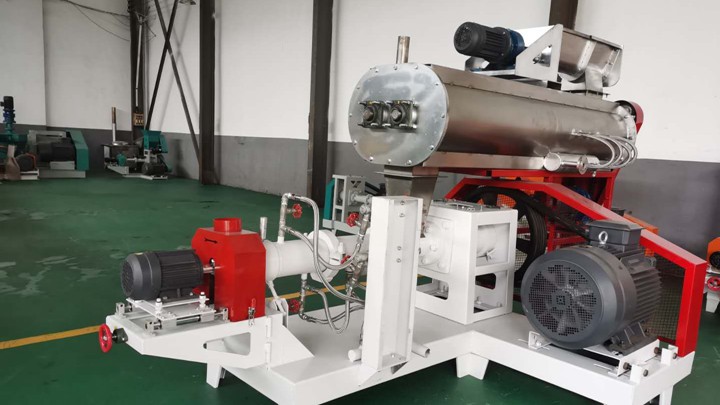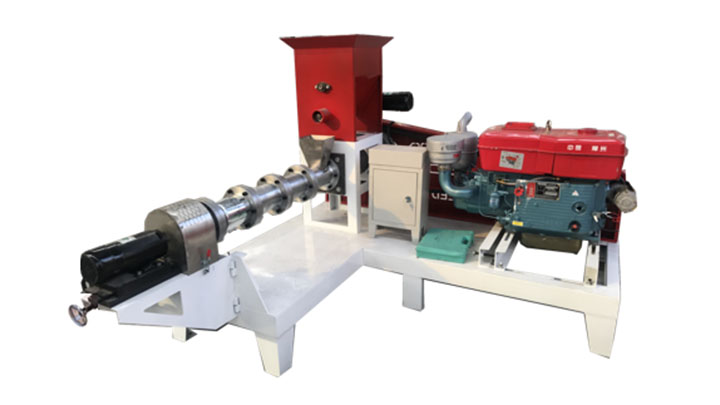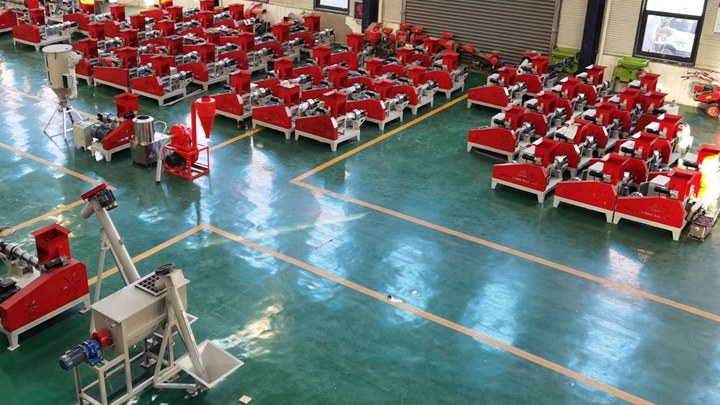.jpg)
Jul 01, 2022 · 1/11/2016 · Tilapia and Shrimp Feed Making in Brazil,Aquafeed making in Brazil,Tilapia feed,shrimp feed,feed formulation,fish feed extruder. Brazil is becoming one of majors aquaculture producers in worldwide, with significant advantages including the coastline of 8,500 km, 12% of the world’s freshwater reserves, tropical and subtropical
Apr 09, 2021 · Commercial tilapia feeds are formulated, cooked, extruded, and pelletized diets typically containing 32 – 40% protein. This can be a fish meal or soy-based protein, with the former being more palatable to the tilapia fish. Floating pellets are generally recommended, as they remain on the surface until consumed.

For example, tilapia feeds produced by San Miguel Foods, Inc., in the Philippines contain the following ingredients: corn, soybean meal, fishmeal, poultry by-product meal, brewer’s yeast, corn gluten, rice bran, copra meal, brewer’s grain, wheat pollard, molasses, vegetable oil, salt, limestone, dicalcium phosphate, ethoxyquin, L-lysine, DL-methionine, binder, mould inhibitor, virginiamycin (Cruz, 1997).

Jul 10, 2022 · Hatchery in netcages. Install 3 x 10 x 0.75 m fine-meshed netcages in ponds or 3 x 10 x 1.5 m fine-meshed netcages in lakes. Stock four (3 females and 1 male) or five (4 females and 1 male) tilapia breeders (3-4 month old, minimum 100 g) per square meter. Feed breeders at 3% of total biomass with tilapia feeds containing 40% protein.

Unfortunately, tilapia eat algae and plants much faster than they can grow back in a small area. In the wild, tilapia schools graze over several miles. A commercial tilapia farmer, intent on feeding only aquatic greens, would need to dedicate several square feet of water surface area, to grow sufficient food for a single tilapia.

Among the important changes made in these new diets are the use of better quality feed ingredients (e.g.white fishmeal), higher dose of vitamin C, and incorporation of anthoxanthin and immune-enhancers (e.g.1,3-D glucan, glucose-mannan compounds). These special feeds generally cost US$ 0.10-0.20/kg higher than regular shrimp feeds.

Tilapia fish is a lean source of protein and also a good source of various vitamins and minerals. In a serving of 100 grams, it packs 26 grams of protein and only 128 calories. Tilapia is a great source of some minerals and vitamins. It is rich in niacin, vitamin B12, phosphorus, selenium and potassium.

Feeding of Tilapia

Jul 22, 2020 · According to the Country STAT Philippines, the gross domestic product of the Philippines in 2013 amounted to 12,634,063 million pesos. The total output value aquaculture production to 93,949mill pesos, accounting for over 0.74 percent of GDP. As shown in Table 1and Figure 1, this sector’s contribution to GDP has decreased in recent years.

Jul 18, 2014 · Last year, the world tilapia production exceeded 4 million metric tons, according to Dr. Guerrero. The Philippines contributed more than 260,000 metric tons. “Tilapia is now second only to the carps as the world's most important farmed fish based on production,” he added. The popularity of tilapia as a food fish has spread around the world.
.jpg)
Sep 28, 2019 · Stock the ponds of at least 6 fingerlings/sqm. The ratio is 1 male is to 3 females. Avoid pairing many male tilapias because this tends to slow down the production of fingerlings since they tend to eat their fingerlings due to lack of feed. Care and Maintenance Feed the tilapias twice daily (morning and afternoon) in one portion of the pond.
.jpg)
Adults. Algae, bacteria, detritus, duckweed, other plants. Because tilapia feed on food sources that are lower on the food chain, they do not have issues with mercury concentration like higher-level predatory fish, such as swordfish, pike, halibut, and albacore. Tilapia have the potential to be a highly sustainable food resource.
.jpg)
The contribution of the Philippines to tilapia production in Asia has increased steadily in the past five years as it addresses hunger and poverty alleviation in the region. Commercial tilapia aquaculture in the Philippines has improved as farmers have become aware of the importance of adopting innovative husbandry technologies. These include the use of intensive culture, using novel feed
.jpg)
Feeding is as follows: twice a day, two periods: 8 a.m. to 9 a.m. and 3 p.m. to 4 p.m. Catch 30 to 50 fish every 15 to 20 days to calculate the average weight to analyze the growth of tilapia fish, which helps adjust feeding speed to help the fish grow healthily. Feeding speed also depends on the fish’s diet.
.jpg)
(Montoya-Camacho et al. 2018). In the Philippines, tilapia culture had 0.4% contribution to the fisheries sector as of 2019. Furthermore, the total tilapia et al. 2014; PSA 2019). The use of less-expensive plant protein sources such as soybean, maize, pea, canola, sunflower seed and “ipil-ipil” as partial or total replacements for